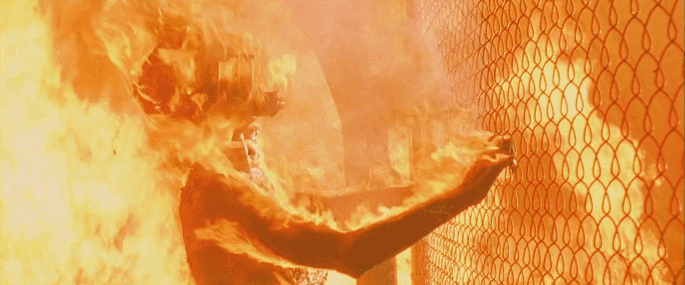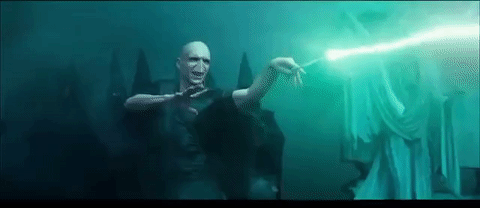With 38 of 52 rooms explored by my players, I feel confident in writing up not a review, but some lessons learned. Some details of the dungeon slightly changed because my players do read this as well.
TotSK play reports: 1 and 2.
ACTUAL LESSONS LEARNED WHILE RUNNING TOTSK
- My players are careful and frightened little mice. They'll avoid any loose step in the hallway, heroically spray a pile of sleeping goblins with burning oil, but one mention of a wagon-sized basilisk that turns torch flames to stained glass and they cower around the corner. Almost no traps triggered, no skeletons awakened, no golems fought. Am I describing them too tough?
- I need a bigger working memory. Keeping the environment in my working memory as the group moves through the complex takes quite a bit of juggling of paper and attention.
- The overview map is almost perfect to run the dungeon from. But some of the abbreviated room descriptions gloss over pretty useful details, such as the de-petrification fungus growing in one of the goblin caves. I had completely switched to the overview map by that point. Which means my players now have no way to bring Basilisk victims back to life. (They haven't met Xixi yet, so easiest thing in the world to have him whip something up.)
- Parts of the dungeon are barren. By which I mean little interactivity with NPCs, and all dangers come from what the PCs do to themselves, such as reaching into burning pits or running across pressure trigger hallways. Not really the module's fault, I think. My players selected a path through quiet areas and lucked out so they didn't encounter roving monsters. I did add scenic sounds of inhabitants to the encounter table (Xixi's clacking when he moves around; Annabelle's singing), but see point (1) my players are frightened mice and took these sounds as something to move away from, not toward.
- There's quite some conflict-free rooms. This comes in handy when I want to add details from my home campaign ("you find a dead nun under a collapsed bookshelf"), or extra connections. Of course improvising without thinking ahead ("seems like the goblins circled behind you"), may sometimes lead to inconsistencies ("so there must be another way forward besides the golem and the basilisk!") that take quick thinking to resolve ("...you're right! You guys find a crawlspace into the darkness"). Fun to do, and TotSK provides you with useful overview maps where you can note these kinds of changes.
- I want to expand this dungeon now. Where's the living quarters? Doomful libraries? And so on. One more level and I'll quit, I promise.
| "Who you calling frightened, mister?" (From) |
TOUGH BUT REWARDING
We take a break, when one of the players comments that running this module looks like hard work for me. He's right, but I'm enjoying TotSK a lot: it's giving me a decent structure to riff off of and make it fit into my home game. I'm improvising and adding to the module during play and there's space for that.I should start by saying that although I've been DMing for 22 years, I have little experience running published modules or large dungeon complexes. Which is why this post is impressions, not a proper review.
So what do I know?
Bigger than I'm used to
Why do I want a module to be concise? Because I would've drowned in a wordier dungeon.
Most of my games run off of brief notes, scribbled monster stats and 3-7 room maps that I mostly draw and always stock myself. I do have writing experience as a science communicator, and when I read TenFootPole's module reviews I agree that a module should be both flavorful and to the point. But only after running TotSK do I appreciate why it is so important to keep a module focused on what's usable at the table.
Compared to my usual haunts, TotSK's 53 points of interest were a real step up in difficulty to run. Not just because there are more locations to serve up. When I run my own dungeons, 75% of the details are in my head instead of on the page. Of course a module needs to write out all of the stuff I'd normally keep in short term memory or improvise - and then it needs the DM to absorb all that written info for play.
Running TotSK was a good learning experience, which is the module's stated intention. During the delve I was constantly moving my focus between the chatter of the group discussing their options, checking the map so I could describe the local environment, reading detailed room descriptions for when they dug into an area. Having, of course, to speed read it all because I didn't want to break the flow of the session. Luckily, TotSK didn't try to cram a novel down my optic nerve when I was looking up the contents of a room, so we had no trouble making it to the end.
(I'd have liked to have more info at my fingertips without having to flip pages, but then I am lazy. See Mappery, below.)
Brief, but with everything you need
TotSK's writing is compact, text blocks short enough to scan in a couple of seconds. Descriptions are brief - highlights only, so you both can and should improvise additional descriptions for areas. As a Dutchie playing with Dutchies I translate and change English descriptions anyway (rules terms are used as-is), so I much prefer these brief prompts to extensive read-aloud blocks.
Where the text has no space for an extensive description, page numbers are provided; I'll add that I would have liked internal links in the PDF as well (for instance between the Basilik descriptor and every room it can see you from).
Mappery
I'm ambivalent about the use of mini maps throughout the module. When I was reading the module I thought these maplets would help me visualize the surrounding area, but during play I thought they showed too small a section.
Distances between rooms are very short, so that players can move from room to room quickly. I wanted to have a few-room overview to keep ahead of them and detail what exits and sensory info they picked up in a new area. That's why during the game I preferred the module's big overview map with callouts to abbreviated room descriptions - less flipping back and forth required to get (most) of the info required to run a room.
If I can write down one suggestion, it is to provide slightly more room information on the overview map so you can really run the dungeon off that map. Perhaps win space by cutting up the map of the full dungeon into the different areas of the complex. Or, approaching this from the other direction, have larger overview maps on one page and the descriptors on the page opposite.
 |
| Whatever you do, don't turn this mini map into a holy cow for next edition. It tells me...there's a hallway somewhere? [TotSK 4.0 edition, p12] |
 |
| Same page, much more useful mini map - this gives me local geography. Although I wish I could zoom out slightly and see even more of the area. [TotSK 4.0 edition, p12] |






















